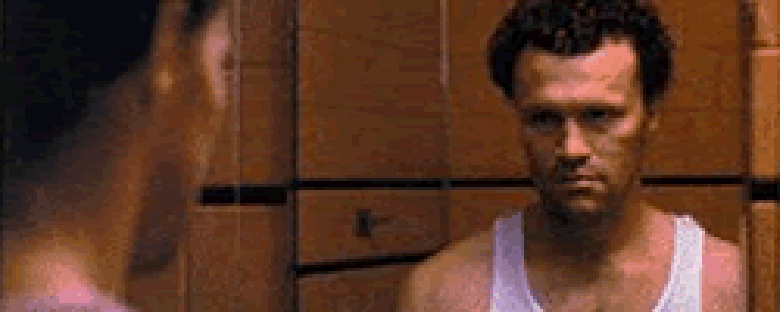Reviews
Henry: Portrait of a Serial Killer is a postmodern horror film, relaying the murderous exploits of the title killer with deadpan and often uncomfortable objectivity. It relies not upon visceral depictions of graphic violence but the sporadic, lifeless motivations of the killer — an established, sympathetic, and ultimately humanistic character. Henry’s graphic visuals (which are ground for numerous citations of the film’s disturbance) are, although rightfully affronting, less disturbing than the psychology of their depiction.
Consider the film’s opening: Henry is displayed at regular intervals: at a diner, driving a car. Interspersed are shots of his victims. The camera pans over them and the soundtrack airs the muffled sound of their final throes. The murders are not shown, though the manner in which they are seen, here, retains a suggestive power.
Filmed in 1985 and delayed in release to 1990, Henry was another opponent of the X rating. Though its eventual release did little to cause a blow to the prohibitive rating, the film does counter traditional perceptions of X for its justifiable legitimacy as an adult film and not a pornographic one.
John McNaughton directs the film off-handedly. There is no emphasis on location or time, as events are merely transcribed in a rough chronology. There are few establishing shots, and dialogues are framed closely. This technique lends the film an intimate yet constrictive quality — this is indeed a character study, though the forced intimacy between the viewer and Henry is uncomfortable. The film, despite its violence, is psychologically disturbing by this measure.
The film is set largely in dim, nondescript alleys in Chicago. The title killer lives with Otis, an often inebriated redneck in check because of parole. Otis” sister Becky comes to live with the two, and she instantly develops a fascination with Henry; he is, however malicious, intriguingly quiet, befitted by a polite exterior. Only close views reveal the indifferent glare in his eyes — the film offers many such views.
In a particularly revealing scene Becky learns of a controversial episode from Henry’s past: he murdered his mother. Violating her sworn secrecy, she confronts him, coaxing him to reveal his justifications by acknowledging demons in her own past.
The scene is revealing because it establishes Henry as a character capable of emotion. His crimes are as mechanical and frenzied as other cinematic killers, yet others are not as human. Moreover, serial killers in film are often distinguished for their lack of humanity (or even identity); Henry is all the more fearsome for his abundance of it. There are several episodes where he is seen as benevolent, and even sympathetic.
The most controversial scene in the film (what likely caused its delay) comes when Henry and Otis record their torture and murder of a family on a stolen video camera. The scene occurs as the recording, seen on a television screen. It is disturbing for many reasons: because it is being watched, it is assumed that the killers succeeded in their aim. Second, the video is unrelenting. It is a single, unedited, and incredibly realistic take. Upon completing it, and exhibiting pride for the successful employment of his perversions, Otis rewinds and replays the footage in slow motion. The scene functions to provide the characteristic gaze of the film. Henry may be praised for its objectivity and censured for the same reason.
We don’t do comments anymore, but you may contact us here or find us on Twitter or Facebook.



